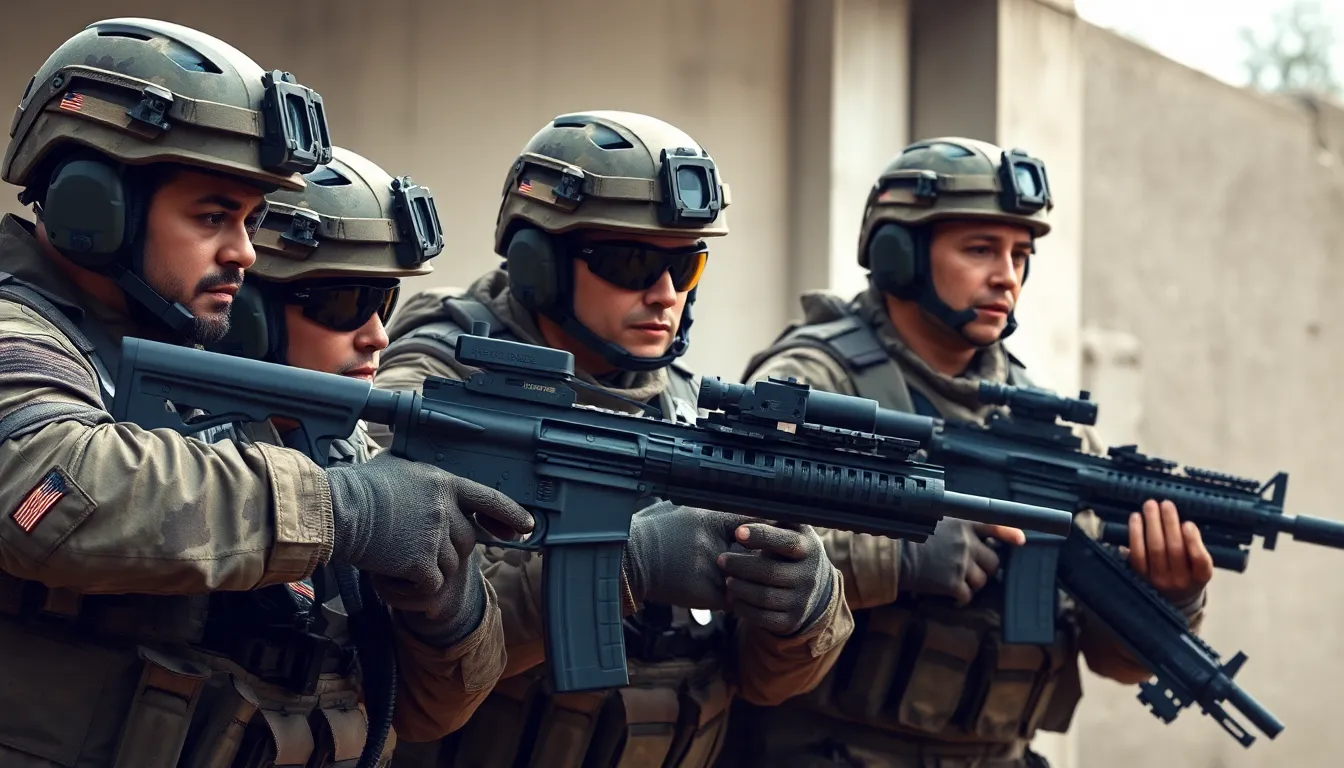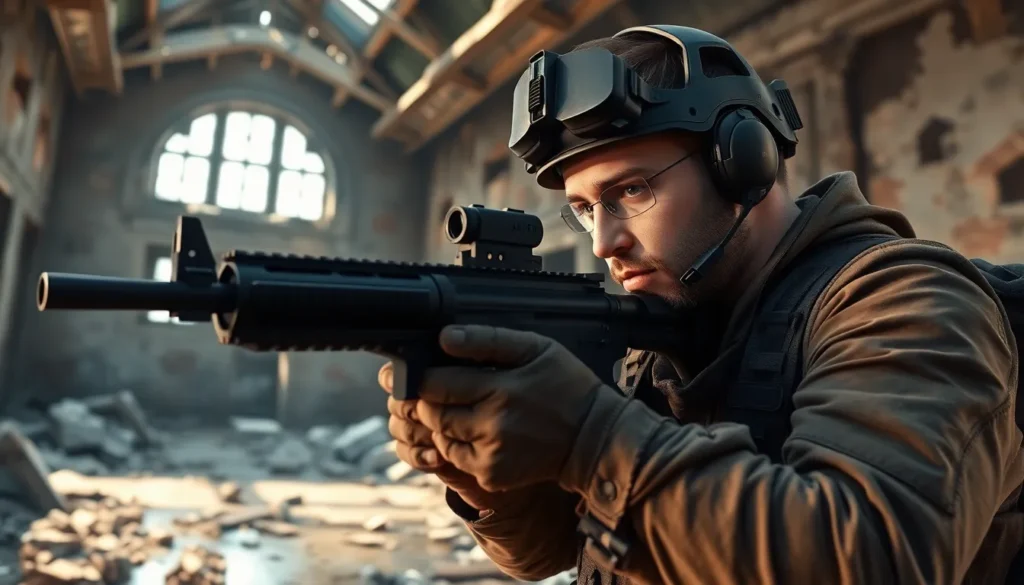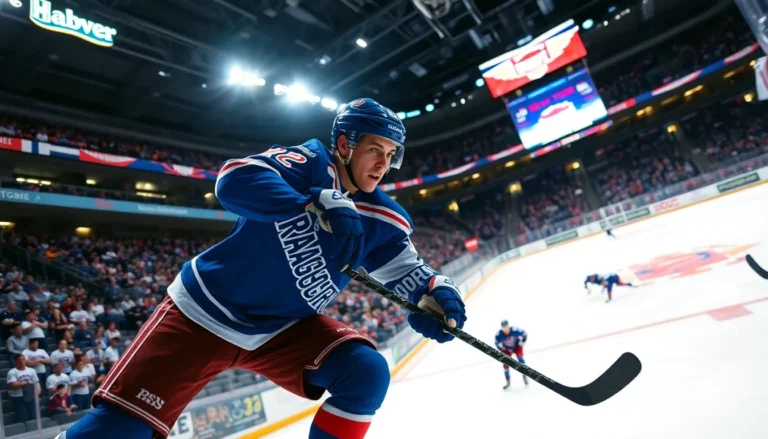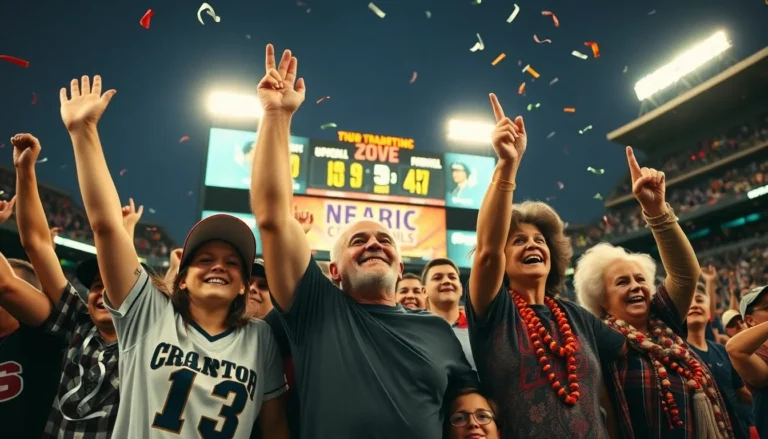Table of Contents
ToggleIn the world of gaming, tactical FPS titles are the secret sauce that spices up the traditional first-person shooter formula. Imagine a battlefield where every bullet counts and strategy reigns supreme. Players don’t just run and gun; they plan, coordinate, and execute missions with the precision of a surgeon—albeit one wielding a virtual weapon.
Overview of Tactical FPS
Tactical first-person shooter (FPS) games focus on strategic gameplay and team coordination. These games require players to think critically, making real-time decisions that impact overall success. Players often navigate intricate maps, utilizing various tactics to outmaneuver opponents. Communication among team members becomes essential, as sharing information can be the difference between victory and defeat.
Game mechanics emphasize precision, demanding skillful aiming and reflexes. Mechanics often include system dynamics such as bullet drop and realistic weapon handling, further immersing players in a simulated environment. They typically replicate military engagements or special operations, enhancing the immersive experience.
Team-based objective gameplay distinguishes tactical FPS titles. Heavily reliant on collaboration, players often fulfill specific roles, such as assault, support, or reconnaissance. Each role complements the others, contributing to the team’s success in completing objectives.
Notable examples include games like “Counter-Strike: Global Offensive” and “Tom Clancy’s Rainbow Six Siege.” These titles showcase complex game dynamics, providing players with diverse strategies to master. Competitive eSports scenes surround such games, promoting skill development and teamwork tactics.
Tactical FPS genres often evolve with player feedback and technological advancements. Developers continuously work to refine gameplay experiences, ensuring engaging content aligns with community expectations. New features and updates regularly enhance player interaction, contributing to the genre’s growth and popularity.
Key Features of Tactical FPS Games

Tactical FPS games incorporate distinct features that set them apart from traditional shooters. These elements enhance both gameplay and player engagement significantly.
Realism and Strategy
Realism defines tactical FPS games. Players encounter mechanics like bullet drop and recoil, which require precise aiming and shooting. Realistic environments often feature destructible elements, adding layers to strategy. Players must analyze their surroundings and adapt to changing situations, enabling in-depth tactical planning. Engaging with realistic physics amplifies immersion, creating a simulated experience that demands thoughtful decision-making.
Team Coordination
Team coordination proves essential in tactical FPS games. Effective communication among team members facilitates strategic maneuvers. Players assume designated roles, such as assault or support, enabling targeted strategies that bolster overall success. Sharing information about enemy positioning or planned tactics can turn the tide of battle. Coordinating attacks or defenses cultivates a sense of teamwork that enhances competitiveness and enjoyment.
Weapon Customization
Weapon customization plays a crucial role in tactical FPS gameplay. Players modify their gear to suit specific play styles and missions, choosing attachments that impact performance. This adaptability encourages experimentation with different setups, allowing players to optimize their loadouts. Customization extends to choosing weapons based on scenarios, enabling players to enhance effectiveness during engagements. The diversity of options fosters a deeper connection between players and their equipment.
Popular Tactical FPS Titles
The tactical FPS genre boasts several popular titles that exemplify strategic gameplay and teamwork. Three standout games are “Rainbow Six Siege,” “Counter-Strike: Global Offensive,” and “Escape from Tarkov.” Each title offers distinct mechanics and challenges that capture player interest.
Rainbow Six Siege
“Rainbow Six Siege” emphasizes tactical team play, where players assume the role of specialized operators with unique skills. Environments are destructible, influencing strategic approaches during matches. Players must collaborate effectively to execute plans, and communication becomes vital for success. Its focus on tactics over aim reinforces the need for critical thinking and adaptability. The game features continuous updates, introducing new operators and maps, keeping gameplay fresh and engaging. Competitive modes attract eSports enthusiasts, fostering a vibrant community.
Counter-Strike: Global Offensive
“Counter-Strike: Global Offensive” remains a cornerstone of the tactical FPS genre. Known for its fast-paced gameplay, players engage in team-based combat, either as terrorists or counter-terrorists. Precision shooting is paramount, as recoil and bullet drop significantly affect performance. Players build strategies around economy management, deciding when to buy gear and weapons for optimal effectiveness. Regular tournaments showcase high-level skill, further invigorating the competitive scene. The strong player base supports a thriving community, sharing strategies and fostering camaraderie.
Escape from Tarkov
“Escape from Tarkov” takes tactical FPS gameplay to another level with its immersive survival mechanics. Players explore a fictional Russian city, navigating intense firefights and scavenging for valuable resources. Each match involves planning routes and gear choices, as losing equipment during combat can severely impact progression. The game’s focus on realism means players must manage health, stamina, and inventory carefully. Cooperative gameplay is encouraged, as teamwork enhances survival chances in the harsh environment. Continuous updates refine mechanics and expand content, maintaining player interest.
The Evolution of Tactical FPS
Tactical FPS games have seen significant progression since their inception, shaping the landscape of competitive gaming. By blending strategy with real-time action, these games continue to captivate players.
Historical Context
Origins of tactical FPS can be traced back to early titles like “Rainbow Six” and “Counter-Strike.” The unique gameplay set these games apart, promoting strategic thinking over reflex-based shooting. With cooperative gameplay becoming essential, players learned to communicate effectively, leading to the formation of tightly-knit teams. As competitive gaming grew, tournaments emerged, popularizing tactical FPS in the eSports arena. Participation in events like ESL and DreamHack highlighted how these games fostered community engagement. The genre blossomed through player-driven modifications and fan base support.
Technological Advances
Technological breakthroughs have significantly transformed tactical FPS experiences. Developers now utilize advanced graphics engines, improving realism and immersion. Enhancements in AI offer smarter opponents, creating dynamic and challenging combat scenarios. Physics engines simulate real-world elements, such as bullet drop and recoil. This realism encourages players to adapt their strategies on the fly. Online networking capabilities enable seamless matchmaking and social interaction among players. Voice communication tools facilitate quick strategic discussions during matches. As VR technology progresses, future tactical FPS games may offer even more immersive environments and experiences for gamers.
Tactical FPS games offer a unique blend of strategy and teamwork that sets them apart from traditional shooters. Their emphasis on realism and critical thinking creates an engaging environment where players must adapt and communicate effectively. As the genre continues to evolve with technological advancements and player feedback, it remains a cornerstone of competitive gaming. The combination of immersive gameplay and strategic depth ensures that tactical FPS games will continue to capture the interest of gamers worldwide. With their rich history and promising future, these games are likely to keep pushing the boundaries of what’s possible in the FPS landscape.







